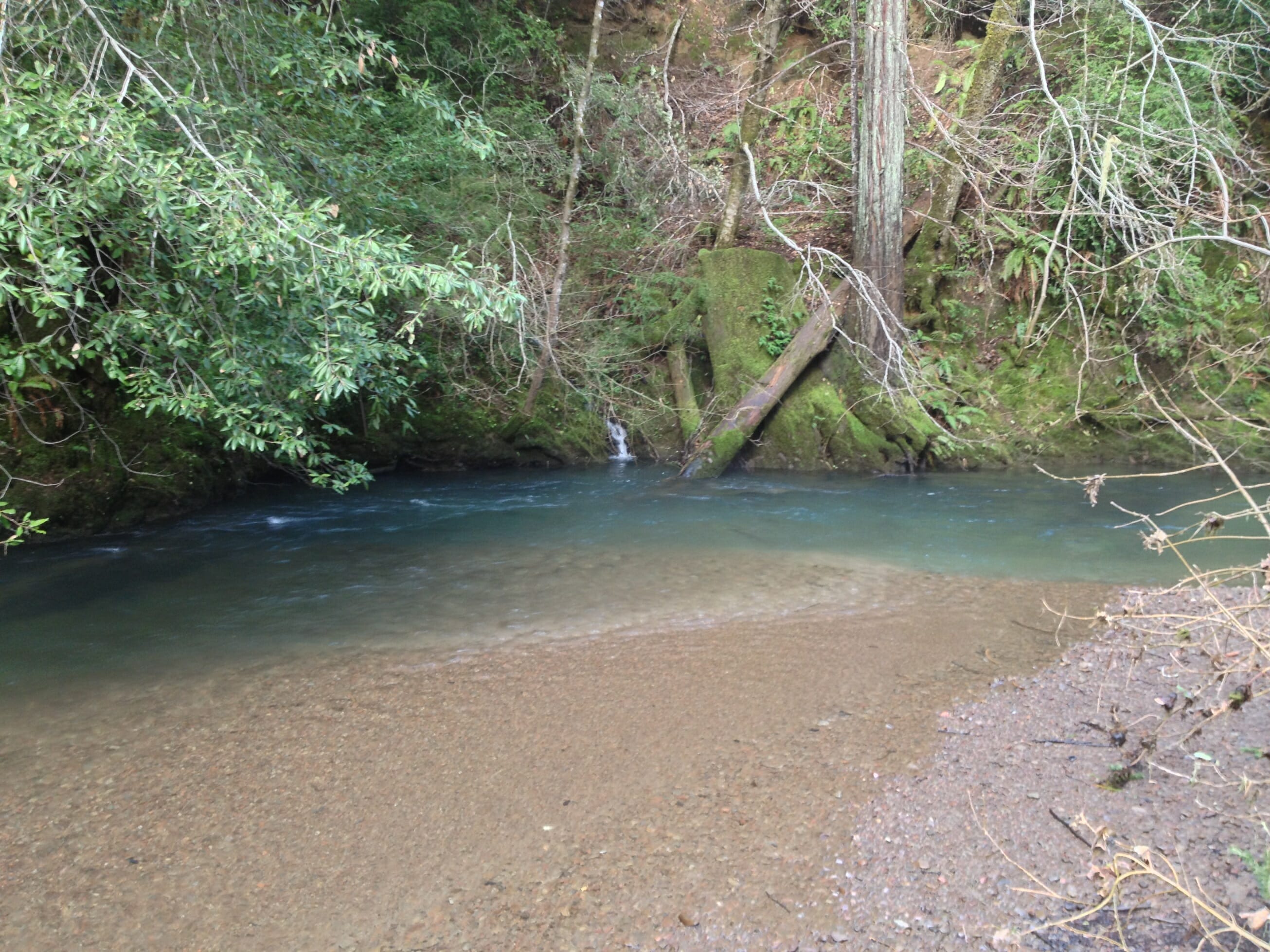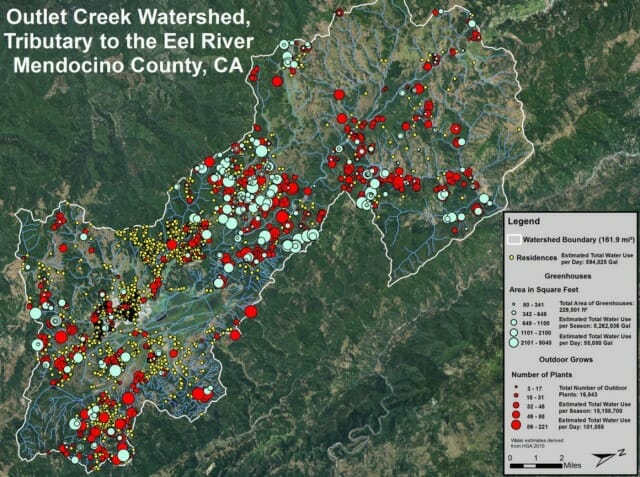This graphic of a tributary to the Eel River shows the intense marijuana cultivation typical of many drainages in California’s Emerald Triangle. The large red circles indicate outdoor grows of more than 100 plants and the pot farms in this drainage alone require more than 15 million gallons of water per growing season.
By Matt Clifford
Sometimes it seems like native salmon and steelhead in California’s remote North Coast region just can’t catch a break.
For decades, these fish suffered from habitat-wrecking logging practices. In recent years, as timber harvesters have made real progress in reducing impacts on streams and salmon and steelhead have begun making a comeback in some watersheds, these fish have been hit with the double whammy of drought and a new threat: thousands of marijuana “grows” (farming operations).
Marijuana growers are literally sucking salmon streams dry. According to research that TU and partners cited in a recent article for the journal Bioscience, some forms of outdoor cultivation use an average of 6 gallons per day per marijuana plant. And even where growers are more efficient in irrigating, their combined water demand can easily exceed available streamflow in the tiny tributaries salmon and steelhead rely on to survive the long, hot summers typical of this region.

To make things worse, the peak of the late summer growing season-when plants are largest and thirstiest-coincides with the time when streamflows are naturally at their lowest, and fish are under the most stress.
While pot growing is hardly new to the North Coast, the explosive growth of the industry in the last ten years is unprecedented. State agencies estimate there are more than 10,000 grow operations in the North Coast area alone-most of them less than a few years old.
So what is TU doing about this? Our response has been more nuanced than one might think. More criminal enforcement is certainly part of the solution, especially for the worst operators-like the trespass grows operated on public lands by cartels.
But under California’s medical marijuana laws, many private land grows are actually legal as far as the state is concerned. And under California water law many of them have the same right to divert water as any other owner of streamside property.
Recognizing this, the state agencies in charge of regulating water rights and water quality have launched an ambitious program to reach out to responsible growers who are willing to come forward and be regulated like any other type of agriculture. TU has been working to support those efforts, both in the legislature and in the field.
TU is conducting outreach to all landowners interested in adopting fish-friendly water practices and coming into compliance with water law-regardless of what they grow. At the same time, we have been aggressively advocating for more enforcement of water laws against growers who choose to remain outside the law.
The big unknown is legalization. Several efforts are underway to put a measure on the 2016 ballot that would legalize and tax recreational marijuana, and polling suggests such a measure could pass.
TU’s California State Director, Brian Johnson, recently co-authored an opinion piece in the San Francisco Chronicle describing how much is at stake for salmon and steelhead in drafting such a legalization measure. It is crucial that any such initiative dedicate a substantial portion of tax revenue from marijuana sales to dealing with impacts on fish and wildlife caused by the industry. This means a steady stream of funds for enforcing water and environmental laws, and for restoring damage done by years of destructive growing practices.

If done right, such a measure could result in substantial improvement over the current system of unregulated cultivation. If done poorly, it could make the problem worse.
TU takes no position on the merits of legalization of marijuana. But in this part of the country, in watersheds where coho and steelhead once ran in the tens of thousands, marijuana cultivation—legal or otherwise—is now one of the primary threats to these iconic fish. We are trying to address this issue in the same way we are tackling other factors that hinder salmon and steelhead recovery: through strategic partnerships, focused advocacy and application of science.
Matt Clifford is California water attorney for Trout Unlimited. Top photo courtesy of California Department of Fish & Wildlife.



